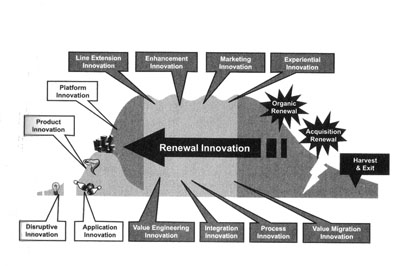A Tour of Web 2.0 Tools
If you’ve maintained a steady pulse over the past few years, you have – no doubt – heard a bunch about Web 2.0. It slices, it dices…it enables mass collaboration…etc. But what if you wanted to actually do something with this nebulous thing we call the read/write web?
That’s exactly the challenge we have for a client in an upcoming session; how to apply this stuff into some tangible gain for the company?
Specifically, how can web 2.0 tools be used to change the way employees interact with the company? With each other? How do suppliers and vendors interact and collaborate using these tools?
As part of our “scan” for this session, we want to put together a virtual tour of Web 2.0 tools, showing some of the things that have caught people’s interest; some of the tools people use in their personal lives and others that they have carried with them into their professional lives.
So what do you use? If you had a visitor from 1995, what would you show them on the web – on your web – to make them realize the staggering extent to which their internet was static, stagnant and irrelevant?
What are the tools that make the new internet indispensable for you?
Here’s a few of my recent favorites…
 Sifting through endless pages of house listings on static pages is mind numbing. How do you figure out where it’s located? How can you tell a pricey neighborhood from a slum? This mashup pulls data from Canada’s MLS (real estate) listings and plots it on Google Maps, so you can see the listings by location, with the pins color coded by price. Now you can see if you’ve got the best house on a bad street, or the worst house on a good one! Chip, of course, one-upped me on this one with his fancy American site, zillow.com.
Sifting through endless pages of house listings on static pages is mind numbing. How do you figure out where it’s located? How can you tell a pricey neighborhood from a slum? This mashup pulls data from Canada’s MLS (real estate) listings and plots it on Google Maps, so you can see the listings by location, with the pins color coded by price. Now you can see if you’ve got the best house on a bad street, or the worst house on a good one! Chip, of course, one-upped me on this one with his fancy American site, zillow.com.
Okay, this isn’t new, but I love it. I could go to 20 different web sites to get my daily dose of reading, or I could use my handy-dandy RSS aggregator to pull together stories from all of my favorite sites…with a few of my friends’ blogs thrown into the mix for good measure.
 In my pre-kayak days, I used to search about 10 different sites to find the best fares. But you know, good data just wants to be free. Kayak digs up fares from all over, then lets you slice the list any way you like with tweaks to your original search. That’s what I’m talkin’ about.
In my pre-kayak days, I used to search about 10 different sites to find the best fares. But you know, good data just wants to be free. Kayak digs up fares from all over, then lets you slice the list any way you like with tweaks to your original search. That’s what I’m talkin’ about.
 Facebook seems so innocent, now. LinkedIn is social networking with an agenda, constantly telling you how many connections you’ve made, and how many opportunities there are within “x” degrees of separation. Whoa. Submitting your resume is sooo old-skool.
Facebook seems so innocent, now. LinkedIn is social networking with an agenda, constantly telling you how many connections you’ve made, and how many opportunities there are within “x” degrees of separation. Whoa. Submitting your resume is sooo old-skool.
Okay, I can not only upload video, but I can embed and share it? You mean, I can subject THE WHOLE WORLD to my baby videos? Wow.
So? If you were to give a tour of the new web, what would be on it? What are the best YouTube videos you’ve seen? How do you share your documents? What’s the most amazing site you’ve been to?


 I read a wonderful book not too long ago entitled “The Culture Code”, which had, as its thesis, the concept that each culture has a “coded” set of primal affinities and aversions. Through group regressions, the author – Clotaire Rapaille – claimed to be able to distill the essence of a culture’s feelings for a particular object or concept at the most basic, reptilian level of consciousness. The book is a fascinating read.
I read a wonderful book not too long ago entitled “The Culture Code”, which had, as its thesis, the concept that each culture has a “coded” set of primal affinities and aversions. Through group regressions, the author – Clotaire Rapaille – claimed to be able to distill the essence of a culture’s feelings for a particular object or concept at the most basic, reptilian level of consciousness. The book is a fascinating read. A recent recommendation lead me to “Dealing with Darwin”, a superb book on sustaining innovation within the enterprise.
A recent recommendation lead me to “Dealing with Darwin”, a superb book on sustaining innovation within the enterprise.
